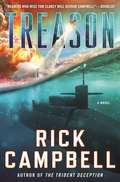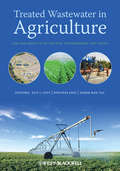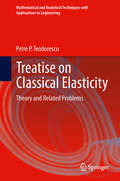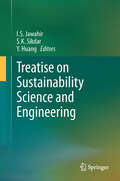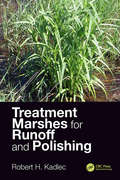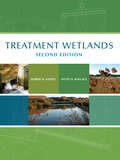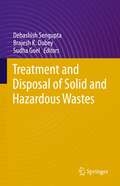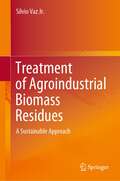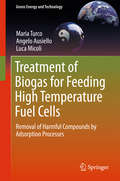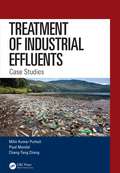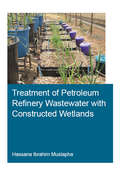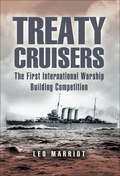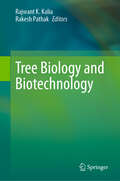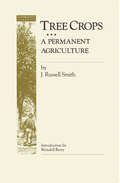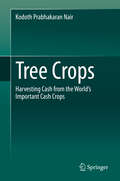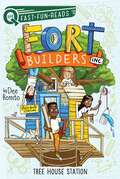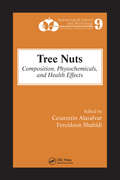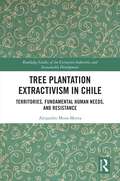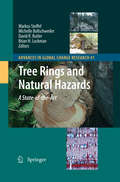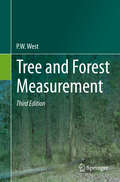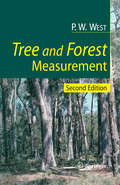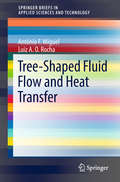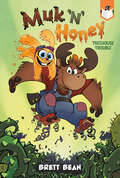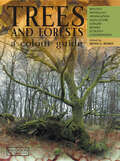- Table View
- List View
Treason
by Rick CampbellIn Rick Campbell’s newest thriller, a military coup in Russia leads to a swift invasion of former Soviet territories—while the U.S. has been rendered powerless to respond. In Russia, the military is anxious to assert its military strength and regain its role as a superpower. The Russian President refuses to greenlight a bold plan to disable American strategic nuclear capability and retake Ukraine and the Baltic States, fearing the potential consequences of involving nuclear weapons. But the generals won't have it and at the first opportunity, they overthrow the president in a military coup. Then they use a narrow window to initiate their bold plan—the Zolotov option—which will render all of America's B2 bombers and ballistic missiles useless. With the U.S. off the board, they swiftly invade Ukraine with an overwhelming force, an invading Army that even NATO can't hope to resist. Now, it's game on. Without their primary weapons, the U.S. has to find a way to fight back on multiple fronts. If they're to have any chance, they'll have to overcome the malware that has grounded their ballistic missiles and planes, as well as secretly land a SEAL team to help rescue the imprisoned Russian President, and help retake control from the forces that are driving Europe into a continental war. Rick Campbell, one of the finest young military thriller writers, returns with his biggest and boldest novel to date.
Treated Wastewater in Agriculture: Use andIimpacts on the Soil Environment and Crops
by Guy J. Levy Pinchas Fine Asher Bar-TalAs the world's population increases and the demand for water increases apace there is a rising demand for information concerning the reuse of wastewater, particularly for the irrigation of key food crops worldwide. This important new book addresses in detail the use of treated wastewater in agricultural situations, its impact on crops and the soil environment. Coverage includes the composition and treatment of wastewater, health considerations, regulations and economic aspects. Major sections of the book also concentrate on crop management and the soil environment. This book is an essential purchase for all those working in irrigation, water management and crop production worldwide. Use of Treated Wastewater (TWW) for irrigation is increasingly important as the world's population increases Chapters prepared by leading scientists in the field Comprehensive coverage of current knowledge and advances in the area of TWW Focus on possible environmental impacts (positive and negative)
Treatise on Classical Elasticity: Theory and Related Problems
by Petre P. TeodorescuDeformable solids have a particularly complex character; mathematical modeling is not always simple and often leads to inextricable difficulties of computation. One of the simplest mathematical models and, at the same time, the most used model, is that of the elastic body - especially the linear one. But, notwithstanding its simplicity, even this model of a real body may lead to great difficulties of computation. The practical importance of a work about the theory of elasticity, which is also an introduction to the mechanics of deformable solids, consists of the use of scientific methods of computation in a domain in which simplified methods are still used. This treatise takes into account the consideration made above, with special attention to the theoretical study of the state of strain and stress of a deformable solid. The book draws on the known specialized literature, as well as the original results of the author and his 50+ years experience as Professor of Mechanics and Elasticity at the University of Bucharest. The construction of mathematical models is made by treating geometry and kinematics of deformation, mechanics of stresses and constitutive laws. Elastic, plastic and viscous properties are thus put in evidence and the corresponding theories are developed. Space problems are treated and various particular cases are taken into consideration. New solutions for boundary value problems of finite and infinite domains are given and a general theory of concentrated loads is built. Anisotropic and non-homogeneous bodies are studied as well. Cosserat type bodies are also modeled. The connection with thermal and viscous phenomena will be considered too. Audience: researchers in applied mathematics, mechanical and civil engineering.
Treatise on Sustainability Science and Engineering
by S. K. Sikdar Y. Huang I. S. JawahirThis book is aimed at providing a comprehensive overview of recent developments in sustainability science and engineering. The book focuses on principles and practices and presents 18 interwoven chapters on four major themes: design for sustainability; sustainability metrics and analysis; sustainable energy; and sustainable supply/value. Significant, state-of-the-art work, methodologies, practices and plans are presented by researchers, technology developers and industry leaders. Topics discussed include: life cycle assessment; product end-of-life options; practical approaches to sustainability; environmental footprint assessment; biofuels; and sustainable supply chain management.
Treatment Marshes for Runoff and Polishing
by Robert H. KadlecTreatment Marshes for Runoff and Polishing represents the most comprehensive and up-date-date resource for the design, construction, and operation of marsh treatment systems. This new edition represents a complete rewrite of the surface flow sections of previous editions of Treatment Wetlands. It is based on the performance hundreds of treatment marshes over the past 40 years. Treatment Marshes focuses on urban and agricultural runoff, river and lake water improvement, and highly treated municipal effluents. New information from the past dozen years is used to improve data interpretation and design concepts. Topics included in this book are Diversity of marsh vegetation Analyses of the human use of treatment marshes New concepts of underground processes and functions Spectrum of marsh values spanning mitigation, restoration, enhancement, and water quality improvement Improved methods for calculation of evapotranspiration and wetland water temperatures Hydraulics of surface and subsurface flows in marshes Analysis of long track records for deterministic and probabilistic behavior Consideration of integrated microbial and vegetative contaminant removals via mass balances Uptake and emission of gases Performance of urban and agricultural wetlands Design procedures for urban and agricultural wetlands Reduction of trace metals, pesticides, pharmaceuticals, endocrine disruptors, and trace organics Updated capital and O&M economics, and valuation of ancillary benefits An updated list of over 1900 references
Treatment Wetlands
by Scott Wallace Robert H. KadlecCompletely revised and updated, Treatment Wetlands, Second Edition is still the most comprehensive resource available for planning, designing, and operating wetland treatment systems. It provides engineers and scientists with a complete reference source that includes: detailed information on wetland ecology, design for consistent performance, site specific studies, estimated costs, construction guidance and operational control through effective monitoring. Case histories of operational wetland treatment systems illustrate the variety of design approaches presented allowing readers to tailor them to the needs of their projects.
Treatment and Disposal of Solid and Hazardous Wastes
by Debashish Sengupta Sudha Goel Brajesh K. DubeyInterest in solid and hazardous waste management is relatively recent, i.e., in the last three decades, and is driven by regulations in most countries. It began with industrial hazardous waste followed by municipal solid waste, and subsequently by many other categories of waste.This book presents numerous examples and case studies of innovative tools, treatment methods and applications in this growing area of research and development. It describes in detail laboratory methods of measuring the biodegradation of specific organic fractions, like floral waste, and also discusses the treatment of yard and food waste by anaerobic digestion and landfill leachate using constructed wetlands. Case studies are provided that show how remote sensing (RS) and GIS were used to develop an integrated solid waste management plan for a city and to evaluate the environmental impacts of stone quarrying activities.The book also features chapters discussing the implications of natural radioactivity in beach placers and their impact on groundwater and other parts of the environment, as well as the twelve principles of green chemistry and their application in the reuse and recycling of solid waste. Moreover, it includes examples of waste to energy, like refuse derived fuel and biofuel generation and an evaluation of their potential, and covers topics such as life cycle assessment as a tool for developing integrated solid waste management systems and an overview of municipal solid waste management rules, illustrating the importance of technological inputs in the development of regulatory frameworks.Written by leading practitioners and scholars in the field, the book enables readers to understand and apply these principles and practices in their endeavours.
Treatment for Posttraumatic Stress Disorder in Military and Veteran Populations
by Committee on the Assessment of Ongoing Effects in the Treatment of Posttraumatic Stress DisorderPrior to the military conflicts in Iraq and Afghanistan, wars and conflicts have been characterized by such injuries as infectious diseases and catastrophic gunshot wounds. However, the signature injuries sustained by United States military personnel in these most recent conflicts are blast wounds and the psychiatric consequences to combat, particularly posttraumatic stress disorder (PTSD), which affects an estimated 13 to 20 percent of U. S. service members who have fought in Iraq or Afghanistan since 2001. PTSD is triggered by a specific traumatic event - including combat - which leads to symptoms such as persistent re-experiencing of the event; emotional numbing or avoidance of thoughts, feelings, conversations, or places associated with the trauma; and hyperarousal, such as exaggerated startle responses or difficulty concentrating. As the U. S. reduces its military involvement in the Middle East, the Departments of Defense (DoD) and Veterans Affairs (VA) anticipate that increasing numbers of returning veterans will need PTSD services. As a result, Congress asked the DoD, in consultation with the VA, to sponsor an IOM study to assess both departments' PTSD treatment programs and services. Treatment for Posttraumatic Stress Disorder in Military and Veteran Populations: Initial Assessment is the first of two mandated reports examines some of the available programs to prevent, diagnose, treat, and rehabilitate those who have PTSD and encourages further research that can help to improve PTSD care.
Treatment of Agroindustrial Biomass Residues: A Sustainable Approach
by Sílvio Vaz Jr.This book provides an indispensable reference guide to the sustainable control and treatment of biomass residues from a wide variety of agroindustrial sources, e.g. sugarcane, livestock, pulp & paper, food wastes, among others. Pursuing a structured and clear approach, the book opens with a general introduction to biomass, sustainability and environmental chemistry aspects, and on how the use of biomass as a renewable material ties into the UN’s Sustainable Development Goals. The book subsequently presents analytical methods applied to different biomass types and their residues and reviews monitoring and treatment strategies in order to avoid pollution of the same. The book closes by describing the value chains, bioeconomy and circular economy for globally relevant agroindustrial biomass. The book is intended for researchers in academia and industry alike and shows how, in addition to sustainability criteria and life cycle assessments, integrating environmental chemistry aspects can contribute to a holistic approach, and unlock the economic potential of biomass in the age of circular economy and sustainable development.
Treatment of Biogas for Feeding High Temperature Fuel Cells
by Maria Turco Angelo Ausiello Luca MicoliThis book reports on the most recent applications of processes with a particular focus on the source and the properties of biogas and on the characteristics of the fuel cells (FCs). It describes adsorbing materials of potential interest are reviewed and the preparation methods and treatments employed to improve the adsorption properties as well as the stability and regenerability. The characterization of the chemical and physical properties involved in these processes is examined in particular detail. The book also covers aspects that concern the development of the adsorption apparatus with particular attention on the target of low residual concentration and high selectivity. High temperature FCs, such as molten carbonates (MCFCs) or solid oxides (SOFCs), are efficient, with a low environmental impact, and they can use a wide variety of fuels, such as biogas. The presence of some poisonous compounds such as sulphides, halides, and siloxanes can react with electrode catalysts and electrolyte, leading to the degradation and short lifetime of the cell. The treatment of raw biogas to obtain a FC-compatible fuel is mainly based on adsorption processes on suitable materials.
Treatment of Industrial Effluents: Case Studies
by Mihir Kumar Purkait Piyal Mondal Chang-Tang ChangTo address the issue of discharge of untreated industrial effluent in the water body causing pollution, adoption of cleaner production technologies and waste minimization initiatives are being encouraged. The book explains each related technology elaborately and critically analyses the same from practical application point of view. In-depth characterization, environmental and health effects and treatment of various industrial effluents are discussed with case studies. Limitations, challenges and remedial actions to be taken are included at the end of each chapter. Chapters are arranged as per specific type of effluents from various industries like textile, tannery/leather plant, and oil refinery.
Treatment of Petroleum Refinery Wastewater with Constructed Wetlands (IHE Delft PhD Thesis Series)
by Hassana Ibrahim MustaphaPollution of waterbodies and the environment by petroleum industry is of particular concern in Nigeria. This problem can be addressed by the application of constructed wetlands (CWs) which is a nature-based system that is simple to construct, have low operational and maintenance costs in terms of supply of energy and its periodic maintenance. The application of CWs in Nigeria for polishing of petroleum refinery wastewater is an unprecedented research. This PhD thesis focused on some specific objectives which were characterization of treated secondary refinery wastewater, design, construction, operation and monitoring of planted (T. latifolia, C. alternifolius and C. dactylon) and unplanted vertical subsurface flow, horizontal subsurface flow and hybrid CWs for the removal of suspended solids, nutrients, heavy metals, organic matter and organic pollutants. The CWs effectively treated the petroleum contaminated wastewater to effluent compliance limits. In this study, T. latifolia planted CWs had consistently higher removal efficiencies for all the measured parameters than C. alternifolius and C. dactylon planted CW systems. Therefore, in order to improve the wastewater quality discharged by Kaduna Refining and Petrochemical Company (KRPC) Nigeria, meet stringent guidelines and protect the recipient streams, installation of CWs at the effluent discharge point of KRPC is strongly recommended.
Treaty Cruisers: The First International Warship Building Competition
by Leo Marriott&“A quite enlightening book that discusses the most important group of heavy cruisers serving during WW2 and how the type evolved.&” —Malcolm Wright, author of British and Commonwealth Warship Camouflage of WWII The Washington Naval Treaty of 1921 and subsequent treaties in the 1930s effectively established the size and composition of the various navies in World War II. In particular, they laid down design parameters and tonnage limitations for each class of warship, including battleships, aircraft carriers, cruisers, and destroyers. With one or two exceptions, battleship construction was deferred until the mid 1930s, but virtually all navies embraced the concept of the eight-inch gun-armed, 10,000-ton heavy cruisers and constructed new vessels almost immediately. This book will trace the political processes which led to the treaties, describe the heavy cruisers designed and built to the same rules by each nation, and then consider how the various classes fared in World War II and attempt to assess which was the most successful. Ships from the navies of Britain, France, Italy, Germany, the United States, and Japan are included. Appendices cover construction tables, the history of each ship, technical specifications, armament, and aircraft carried. &“The author has crafted a book that is both a technical read and popular history. The book provides an excellent overview of the reasoning each country employed in building its interwar cruiser force and how they committed these ships to battle. If development of and employment of weapon systems is of interest to you, this is a must-read book.&” —Naval Historical Foundation
Tree Biology and Biotechnology
by Rakesh Pathak Rajwant K. KaliaThis edited book aims to bring out a comprehensive collection of information on tree biology, breeding, improvement, genetics, and biotechnology. The focus of this book is to address the status of tree biology research through biotechnological, physiological, pathological, and entomological aspects. Trees are dominant and perennial species found in several ecosystems. They are the only piece of infrastructure that gains value over time. Their economic relevance is well known in terms of the production of food, feed, fodder, fuel, timber, and other products. Trees are well-known habitats for different organisms. They also deliver various ecosystem services, including temperature regulation, mitigation of soil erosion, and managing and filtering rainwater. Tree species are versatile and are capable of providing livelihood security to people, besides several other advantages. In the era of high population growth and increasing pressure on agricultural systems, efficient management of tree resources is the need of the time. Therefore, it is essential to understand tree biology, breeding, and improvement. This book comprises information on various aspects of tree breeding, biology, genetics, and research in the improvement of tree species. Applications of tissue culture, biotechnological approaches, tree health management, insect pest management, and nutrient recycling have been covered in the book, along with some chapters on case studies from Rajasthan and Africa. This book is a useful read for agricultural students, researchers, teachers, and professionals interested in the fields of agroforestry, horticulture, silviculture, and tree improvement.
Tree Crops: A Permanent Agriculture
by Wendell Berry John Russell Smith Devin-Adair Publishing Co.A complete reference for growing high-yield fruit- and nut-bearing trees.
Tree Crops: Harvesting Cash from the World's Important Cash Crops
by Kodoth Prabhakaran NairThis book paints a wide canvas of the immense global economic potential of ten most important cash generating crops spread over Asia, Africa and Latin America, namely, Arecanut, Cashew Nut, Coconut, Cinchona, Cocoa, Coffee, Tea, Oil Palm, Rubber and Wattle. It provides a cross-sectoral, multi-scale assessment of the status of these crops, from seed to dining table, an invaluable treatise on the subject. Structured to be an invaluable tool for the inquisitive researcher, an ardent student, and, an insightful policy maker.
Tree House Station: A QUIX Book (Fort Builders Inc. #4)
by Dee RomitoThe kids of Fort Builders, Inc., hunt for the perfect treehouse tree in the fourth story in the fun-to-read Aladdin QUIX chapter book series that&’s perfect for emerging readers!Caleb and the rest of the Fort Builders, Inc. group feel like it&’s finally time to have their own dedicated workspace! Their big idea? A fort treehouse! But finding the perfect tree for their unique fort is a little tougher than they thought...
Tree Nuts: Composition, Phytochemicals, and Health Effects (Nutraceutical Science and Technology)
by Fereidoon Shahidi Cesarettin AlasalvarNuts have been long perceived as a high-fat, high-calorie food, best avoided or consumed in moderation. However, research is showing that tree nuts are cholesterol-free and contain unsaturated fats which can help lower the risk of heart disease. Nuts also provide essential nutrients such as magnesium, chromium, zinc, and manganese. Like all plant foods they are high in fiber and phytochemicals. This book examines ten popular tree nuts and describes each nut's compositional characteristics, lipid characteristics, effects of consumption on serum lipid profiles, as well as their phytochemicals and role disease prevention. In addition the book covers allergens and uses for non-edible parts.
Tree Plantation Extractivism in Chile: Territories, Fundamental Human Needs, and Resistance (Routledge Studies of the Extractive Industries and Sustainable Development)
by Alejandro Mora-MottaThis book examines how extractivism transforms territories and affects the well-being of rural people, drawing on in-depth fieldwork conducted on tree plantations in Chile.The book argues that pine and eucalyptus monoculture plantations in southern Chile are a form of extractivism representing a mode of nature appropriation that captures large amounts of natural resources to produce wooden-based raw materials with little processing and an export-oriented focus. The book discusses the nexus of extractivism, territorial transformations, well-being, and emerging resistances using a participatory action research methodological approach in the Region of Los Ríos, southern Chile. The findings show how the configuration of an extractivist logging enclave generated a substantial and irrevocable reordering of human-nature relations, resulting in the territorial and ontological occupation of rural places that disrupted the fundamental human needs of peasants and indigenous people. The book maintains that Chile's green growth development approach does not challenge the consolidated tree plantation enclave controlled by large multinationals. Instead, green growth legitimises the extractivist logic. The book draws parallels with other countries and regions to contribute to wider debates surrounding these topics.This book will be of great interest to students and scholars of the extractive industries, development studies, political ecology, and natural resource governance.
Tree Rings and Natural Hazards
by David R. Butler Brian H. Luckman Markus Stoffel Michelle BollschweilerThe initial employment of tree rings in natural hazard studies was simply as a dating tool and rarely exploited other environmental information and records of damage contained within the tree. However, these unique, annually resolved, tree-ring records preserve valuable archives of past earth-surface processes on timescales of decades to centuries. As many of these processes are significant natural hazards, understanding their distribution, timing and controls provides valuable information that can assist in the prediction, mitigation and defence against these hazards and their effects on society. Tree Rings and Natural Hazards provides many illustrations of these themes, demonstrating the application of tree rings to studies of snow avalanches, rockfalls, landslides, floods, earthquakes, wildfires and several other processes. Several of the chapters are "classic studies", others represent recent applications using previously unpublished material. They illustrate the breadth and diverse applications of contemporary dendrogeomorphology and underline the growing potential to expand such studies, possibly leading to the establishment of a range of techniques and approaches that may become standard practice in the analysis of natural hazards in the future.
Tree and Forest Measurement
by P. W. WestForests must be measured if they are to be managed and conserved properly. This book describes the essential principles of modern forest measurement, whether using simple hand-held equipment or sophisticated satellite imagery. It particularly focuses on measuring forest biomass over large forest areas, a key aspect of climate change studies, as well as the volumes of wood that are commercially available. Written in a straightforward style, it will be accessible to anyone who works with forests, from the professional forester to the layperson. It considers not only how and why forests are measured but also the scientific basis of the measurements taken.
Tree and Forest Measurement
by Phil WestForests must be measured, if they are to be managed and conserved properly. This book describes the principles of modern forest measurement, whether using simple, hand-held equipment or sophisticated satellite imagery. Written in a straightforward style, it will be understood by everyone who works with forests, from the professional forester to the layperson. It describes how and why forests are measured and the basis of the science behind the measurements taken.
Tree-Shaped Fluid Flow and Heat Transfer (SpringerBriefs in Applied Sciences and Technology)
by António F. Miguel Luiz A. RochaThis book provides the first comprehensive state-of-the-art research on tree (dendritic) fluid flow and heat transfer. It covers theory, numerical simulations and applications. It can serve as extra reading for graduate-level courses in engineering and biotechnology. Tree flow networks, also known as dendritic flow networks, are ubiquitous in nature and engineering applications. Tree-shaped design is prevalent when the tendency of the flow (fluid, energy, matter and information) is to move more easily between a volume (or area) and a point, and vice versa. From the geophysical trees to animals and plants, we can observe numerous systems that exhibit tree architectures: river basins and deltas, lungs, circulatory systems, kidneys, vascularized tissues, roots, stems, and leaves, among others. Tree design is also prevalent in man-made flow systems, both in macro- and microfluidic devices. A vast array of tree-shaped design is available and still emerging in chemical engineering, electronics cooling, bioengineering, chemical and bioreactors, lab-on-a-chip systems, and smart materials with volumetric functionalities, such as self-healing and self-cooling. This book also addresses the basic design patterns and solutions for cooling bodies where there is heat generation. Several shapes of fin as well as assemblies of fins are addressed. An up-to-date review of cavities, i.e., inverted or negative fins, for facilitating the flow of heat is also presented. Heat trees using high thermal conductivity material can be used in the cooling of heat-generating bodies, and can also be applied to the cooling of electronics.
Treehouse Trouble #1 (Muk 'n' Honey)
by Brett BeanMeet Honey Bunny and Muk Muk Moose: the inventor duo who make whimsical creations to help the forest, even if it takes them a few times to get it right! Designed to engage early readers, this chapter book series combines simple text, lively illustrations, and laugh-out-loud humor to help boost kids' confidence and create lifelong readers!Honey Bunny and Muk Muk Moose may be forest inventors, but when the staircase to their treehouse collapses, they're stumped! Not only do they have to get back up in time to take their delicious Triple Decker Hunger Wrecker concoction out of the oven, but now some of their friends need help solving their own problems, too. Can Honey Bunny and Muk Muk Moose come up with new creations to help everyone, even themselves?With full-color illustrations on every spread, this humorous and whimsical story is perfect for kids just beginning to read on their own. The short chapters, early vocabulary, and amusing illustrations make reading easy and fun! Exciting, easy-to-read books are the stepping stone a young reader needs to bridge the gap between being a beginner and being fluent.
Trees & Forests, A Colour Guide: Biology, Pathology, Propagation, Silviculture, Surgery, Biomes, Ecology, and Conservation
by Bryan G. BowesTrees are one of the dominant features of our existence on earth and play a fundamental role in the environment. This book gives the reader an overview and understanding of trees. Subject areas covered include ecology and conservation, tree anatomy and evolution, pathology, silviculture, propagation, and surgery. The different chapters cover trees
